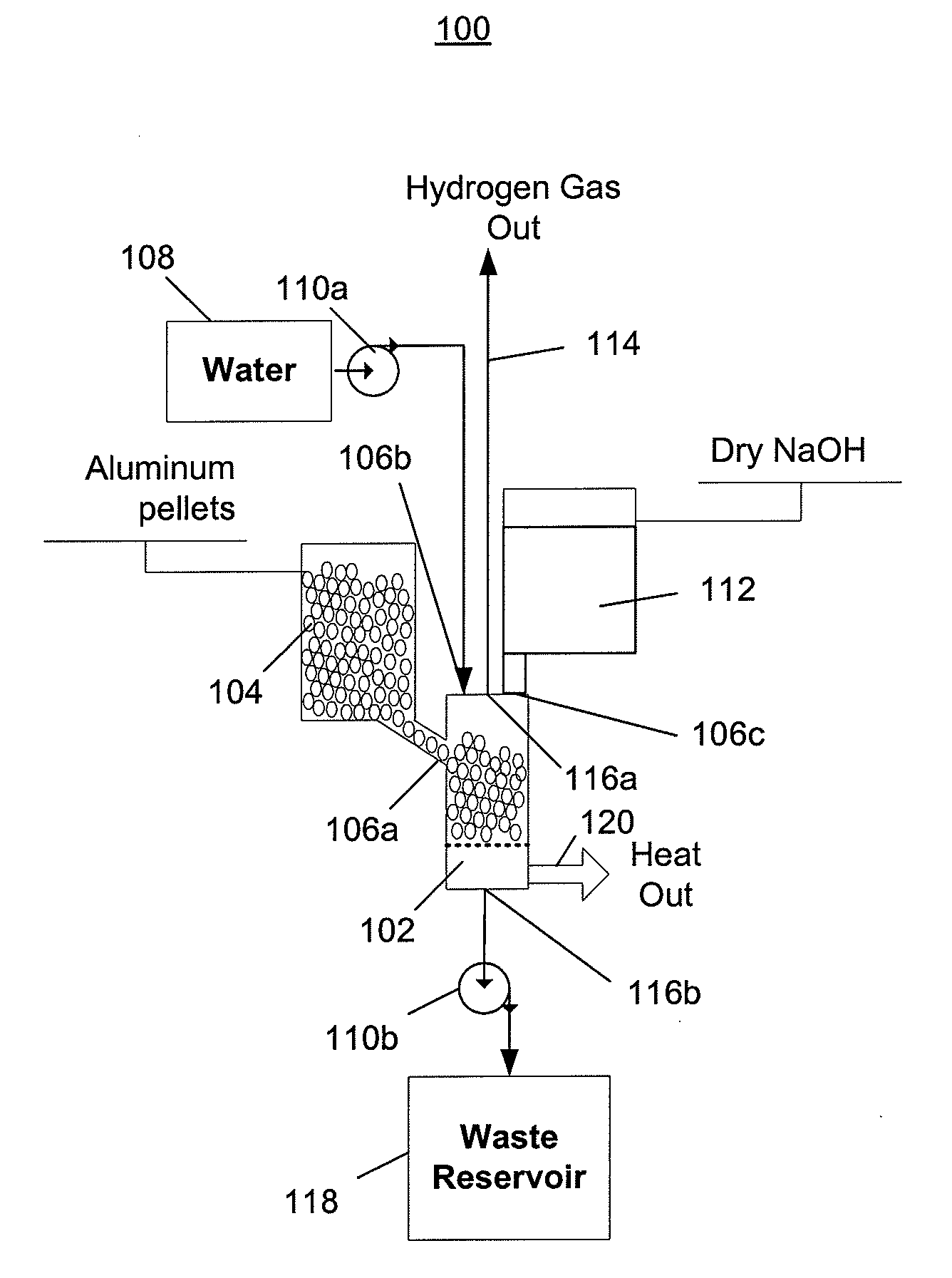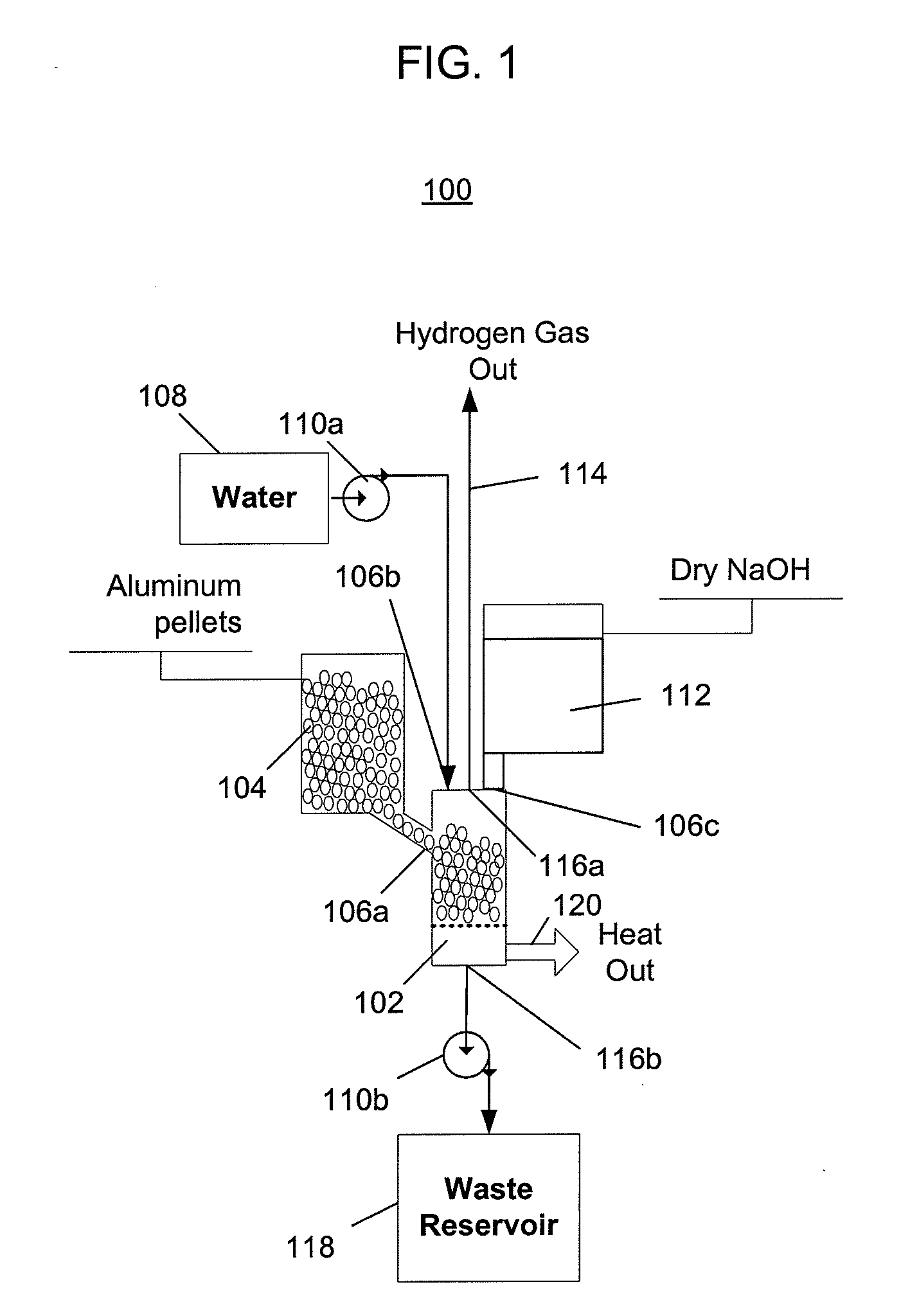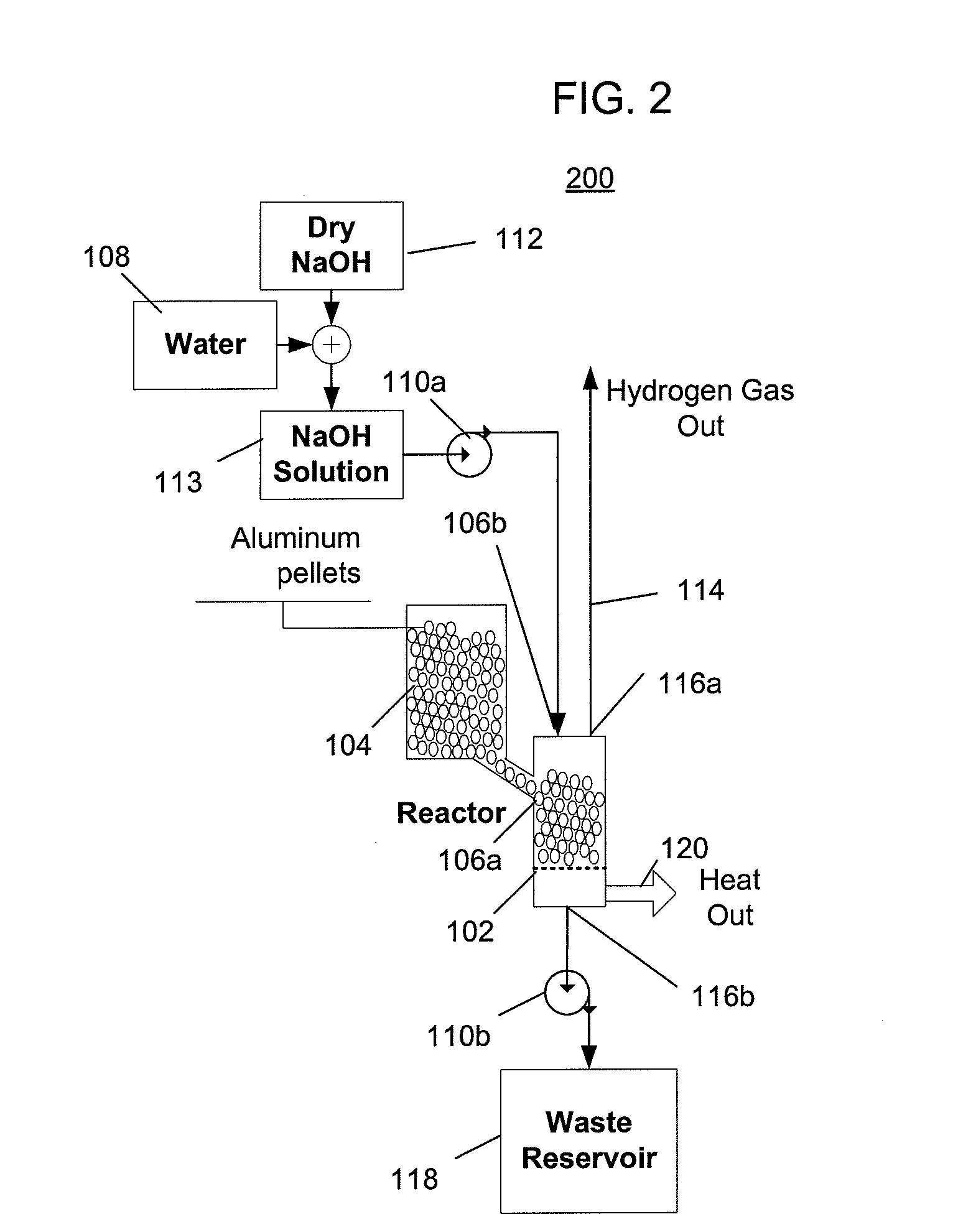Aluminum-alkali hydroxide recyclable hydrogen generator
a hydrogen generator and alkali hydroxide technology, applied in the field of aluminum-alkali hydroxide recyclable hydrogen generators, can solve the problems of high cost of distribution via costly compressed hydrogen filling stations, dangerous for the consuming public, and high cost of storage and transportation
- Summary
- Abstract
- Description
- Claims
- Application Information
AI Technical Summary
Benefits of technology
Problems solved by technology
Method used
Image
Examples
first embodiment
[0052]FIG. 1 depicts a hydrogen generator 100 having a chemical reactor that receives aluminum from a first inlet, water from a second inlet, and sodium hydroxide from a third inlet, and outputs hydrogen, a waste solution, and heat. Referring to FIG. 1, the hydrogen generator 100 includes a reactor (or reaction chamber or reaction cell) 102, an aluminum source 104 that provides aluminum to the reactor via a first inlet 106a, a water source 108 and a first pump 110a that pumps water from the water source into the reactor via a second inlet 106b, and a sodium hydroxide source 112 that provides sodium hydroxide to the reactor via a third inlet 106c. The hydrogen generator 100 outputs hydrogen 114 from a first outlet 116a, and a waste solution is pumped out of a second outlet 116b by a second pump 110b into a waste reservoir 118. Heat 120 produced by the chemical reaction is not captured and is instead allowed to escape into the surrounding environment.
[0053]The configuration of the hyd...
second embodiment
[0055]FIG. 2 depicts a hydrogen generator 200 having a chemical reactor that receives aluminum from a first inlet and a solution of water and sodium hydroxide from a second inlet, and outputs hydrogen, a waste solution, and heat. The solution of hydroxide and water can be, for example, a solution of 74 grams of sodium hydroxide and 100 ml of water, which represents the practical maximum ratio of dissolved sodium hydroxide to water at room temperature. At higher temperatures, a higher ratio of sodium hydroxide to water can be used but doing so would become impractical if the solution were to cool to room temperature when crystallization of a significant quantity of the sodium hydroxide would occur, which would be undesirable. Referring to FIG. 2, the hydrogen generator 200 includes a reactor 102, an aluminum source 104 that provides aluminum to the reactor via a first inlet 106a, a water source 108 and a sodium hydroxide source 112 that provide water and sodium hydroxide that is mixe...
third embodiment
[0057]FIG. 3 depicts a hydrogen generator 300 having a chemical reactor that receives aluminum and water from a first inlet and sodium hydroxide from a second inlet, and outputs hydrogen, a waste solution, and heat. Referring to FIG. 3, the hydrogen generator 300 includes a reactor 102, an aluminum source 104 that provides aluminum to the reactor via a first inlet 106a, a water source 108 and a first pump 110a that pumps water from the water source into the aluminum source 104 via an opening 302 and a sodium hydroxide source 112 of dry sodium hydroxide that is provided to the reactor 102 via a second inlet 106b. The hydrogen generator 300 outputs hydrogen 114 from a first outlet 116a, and a waste solution is pumped out of a second outlet 116b by a second pump 110b into a waste reservoir 118. Heat 120 produced by the chemical reaction is not captured and is instead allowed to escape into the surrounding environment.
[0058]The hydrogen generator 300 of FIG. 3 can combine the aluminum a...
PUM
 Login to View More
Login to View More Abstract
Description
Claims
Application Information
 Login to View More
Login to View More - R&D
- Intellectual Property
- Life Sciences
- Materials
- Tech Scout
- Unparalleled Data Quality
- Higher Quality Content
- 60% Fewer Hallucinations
Browse by: Latest US Patents, China's latest patents, Technical Efficacy Thesaurus, Application Domain, Technology Topic, Popular Technical Reports.
© 2025 PatSnap. All rights reserved.Legal|Privacy policy|Modern Slavery Act Transparency Statement|Sitemap|About US| Contact US: help@patsnap.com



